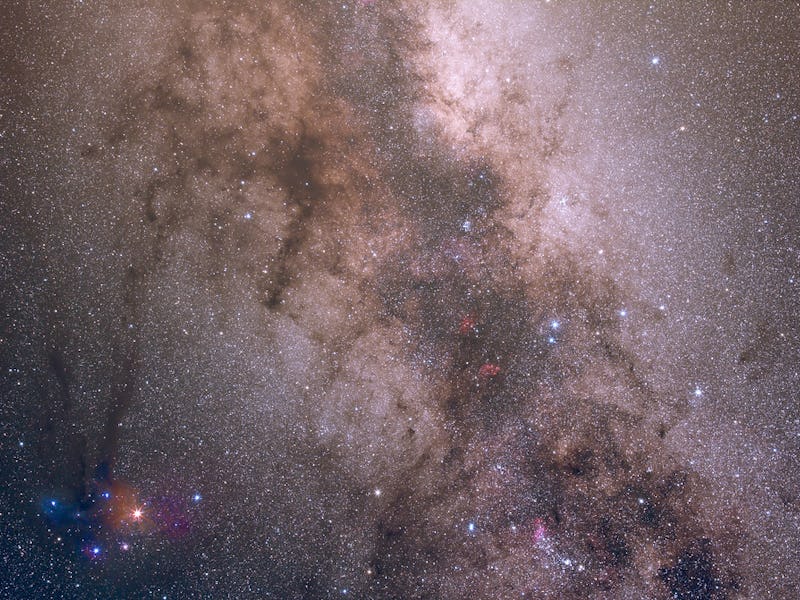SETI Search for Extra-Terrestrials Should Aim at Center of Milky Way Galaxy
Look for the needle in the center of the galactic haystack.

Supernovae are great when you want to vomit huge amounts of radiation into space, but not so hot for letting life as we know it survive. The sterilizing effects of exploding stars are why some astrobiologists have argued that the search for extraterrestrial life shouldn’t stray too close to the center of the galaxy. Ah, but here enters a new analysis that says aim at the heart: that the age of the inner galaxy and the frequency of star explosions turn the odds closer in the favor of alien life.
As there is a habitable zone within solar systems — the “Goldilocks area” where the water has the best chance of existing — there too is the idea of a Galactic Habitable Zone. This sweet spot, so the thinking goes, is far enough from the volatile super-massive black hole and supernovae center, but near enough to contain enough of the metallic elements that allow biological processes to occur.
But a pair of astrobiologists who ran a computer simulation argue in their new paper, published in August in the journal Astrobiology (a non-paywalled submitted version is here), that about 2 billion years ago life had a solid chance of emerging in the inner galaxy given the density of planets there — even if intelligent life took as much as three times longer to pop up there than on Earth. SETI-life-finding gear should be aimed at the inner galaxy, they say, especially those areas less likely to be exposed to cosmic rays below or above the galactic midplane.
Of course this is all theoretical and there’s no definitive proof we are not a faint, fluky ember in a cold and vacant universe. Happy Monday, y’all.